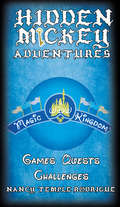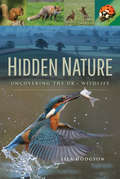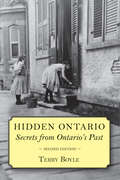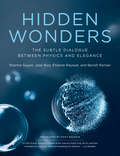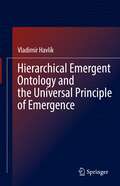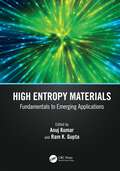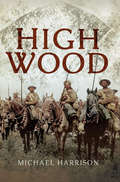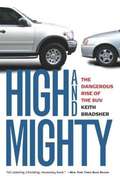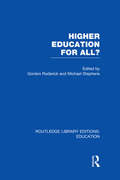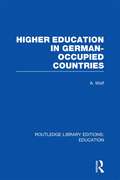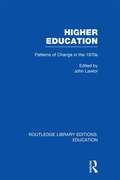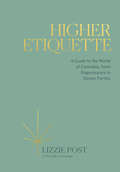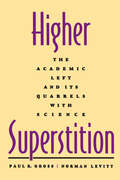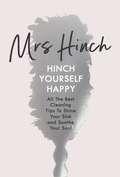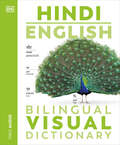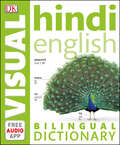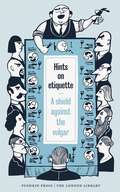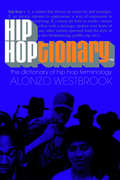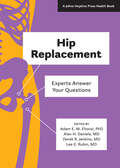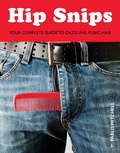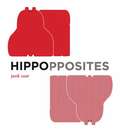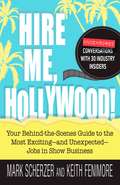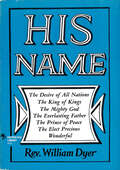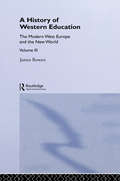- Table View
- List View
Hidden Mickey Adventures in WDW Magic Kingdom
by Nancy Temple RodrigueEXPLORE WALT DISNEY WORLD MAGIC KINGDOM® IN A WHOLE NEW WAY See your favorite Park with a new set of eyes! GAMES, PUZZLES and CHALLENGES AWAIT AS YOU RACE THROUGH W D W MAGIC KINGDOM® Work alone, with friends, or team up and challenge them. Score Points on each quest you finish. See who knows the park the best as you decipher cryptic clues and find hidden symbols. TEST YOUR KNOWLEDGE OF THE MAN THAT STARTED IT ALL: WALT DISNEY Almost all the scavenger hunts are handicap accessible. FUN FOR ALL AGES! From the author of the acclaimed Hidden Mickey Adventures series. HIDDEN MICKEY ADVENTURES: in WDW Magic Kingdom is part of the Hidden Mickey Adventures series, where readers will enjoy more action-adventure mysteries about Walt Disney and Disneyland®
Hidden Nature: Uncovering the UK's Wildlife
by Isla HodgsonIn every walk with nature, one receives far more than he seeks John MuirThis is a book about Britains wildlife; how to discover it, and the adventures we can have with it. Its aim is to show that you dont have to travel to the nether reaches of the Arctic or the deepest corners of the Amazon rainforest to experience weird and wonderful creatures they are right here, on our doorstep.In a world where nature is slowly being replaced by technology and material things, every single one of us could do with appreciating the flora and fauna that we have. To spend time in the outdoors, exploring, searching and learning; teaching ourselves that there is life beyond our laptop screens. And it needs our help. Every day we lose more species, more habitatbut how are we meant to know what to save if we dont know what we will lose?This book is about just that. Written by a young conservationist who hasnt quite grown up, it details her small adventures travelling the UK in search of wildlife encounters, often on a shoestring budget. From ancient forests and coastal wilderness, to bustling city streets and suburban back gardens, nature is everywhere if you know where to look. Featuring unique illustrations and photography, Britains wild things will inspire you to get out there and discover the UKs hidden wilderness.
Hidden Ontario: Secrets from Ontario’s Past
by Terry BoyleLimited time offer. Terry Boyle unveils the eccentric and bizarre in these mini-histories of Ontario’s towns and cities: the imposter who ran the Rockwood Asylum in Kingston; Ian Fleming’s inspiration for James Bond; the Prince of Wales’s undignified crossing of Rice Lake; the tragic life of Joseph Brant; the man who advertised his wife’s death before poisoning her; as well as Ontario’s first bullfight and the answer to the question, "Why did so many lumberjacks sport beards?" The colourful characters, Native legends, and incredible tales that make up our province’s fascinating past come alive in Hidden Ontario. From Bancroft, Baldoon, and Brighton to Timmins, Toronto, and Trenton, find out more about the Ontario you thought you knew.
Hidden Wonders: The Subtle Dialogue Between Physics and Elegance
by Etienne Guyon Jose Bico Etienne Reyssat Benoit RomanThe hidden elegance in everyday objects and physical mechanisms, from crumpled paper to sandcastles.Hidden Wonders focuses on the objects that populate our everyday life--crumpled paper, woven fabric, a sand pile--but looks at them with a physicist's eye, revealing a hidden elegance in mundane physical mechanisms. In six chapters--Builders, Creating Shapes, Building with Threads, From Sand to Glass, Matter in Motion, and Fractures--the authors present brief stories, set in locales ranging from the Eiffel Tower to a sandcastle, that illustrate the little wonders hidden in the ordinary. A simple experiment that readers can perform at home concludes each story. More than 200 illustrations bring the stories to life.
Hierarchical Emergent Ontology and the Universal Principle of Emergence
by Vladimír HavlíkThis book offers a new look at emergence in terms of a hierarchical emergent ontology. Emergence is recognised as a universal principle, as universal as the principle of evolution. This is achieved by setting out the ontological criteria of emergence and such criteria’s various roles. The traditional dichotomies are overcome, e.g., the synchronic and diachronic perspectives are unified, allowing a single, universal principle of emergence to be applied across various fields of science. As exemplars of its practical utility in both explanation and prediction, this new approach is applied to three different scientific areas: cellular automata, quantum Hall effects, and the neural network of the mind. It proves that the resulting metaphysics of hierarchical emergent ontology plays a fundamental role in unifying science, an impossible task under classical reductionism.
High Entropy Materials: Fundamentals to Emerging Applications
by Ram K. GuptaHigh Entropy Materials covers the fundamental concepts of these materials and their emerging applications. To fulfil growing energy demand, scientists are looking for novel materials which can be used for the fabrication of high-performance energy devices. Many materials such as graphene, carbon nanotubes, and metal oxides are used in energy production and storage. A new class of metal oxides, multicomponent metal oxides, known as high entropy materials, have attracted considerable attention not only for their energy applications but also other emerging applications such as use in sensors, catalysts, and CO2 absorption.Key Features: Reviews state-of-the-art developments Provides new directions to scientists, researchers, and students to better understand the principles, technologies, and applications of high entropy materials Discusses ongoing challenges and visions for the future
High Wood
by Michael HarrisonBois de Fourcaux, a luxuriant woodland covering 75 acres, set in the area of the battlefields of the Somme, dominates the surrounding landscape today, as it did in the summer of the year 1916. Known to the British Army as High Wood, the invading Germans had occupied the wood as it proved to be a natural field fortification and a menace that had to be neutralized if the British were to find a way forward in their attempts to breach the trench systems of the German Army and break out into the Green Fields Beyond.This insightful publication will take the battlefield visitor, and also those who are unable to visit the site, on a journey through the history of the battles for High Wood and its environs. It covers the most significant dates in the British Armys struggle to eject the invader and the Germans determination to hold that which they considered to be their new National Frontier. This is the story of the largely amateur British Army of 1916. Lessons were learned in the roaring furnace of the Somme that would transform the fighting ability of the British irrevocably: High Wood was at the epicentre of that learning process.The book contains detailed maps from the time of the High Wood battles using the excellent British Trench maps and, importantly, an explanation on the use of the numbered grid system, which enables the visitor to locate, to within 5 yards, the site of an action that took place 100 years ago. Photographs are also included to enhance the visitor experience. Join us for the journey
High and Mighty: The Dangerous Rise of the SUV
by Keith BradsherFrom the book: Sport utility vehicles have taken over America's roads - pushing fuel consumption up and traffic safety down. Keith Bradsher has long been at the forefront of critical SUV coverage and in HIGH AND MIGHTY he delivers a thorough, undeniable indictment of these vehicles as much worse than cars for their occupants, for other motorists, for pedestrians, and for the planet itself. This masterpiece of investigative j'ournalism shows how a flawed regulatory system, a desperate Detroit, and our national love for "bigger and better" have combined to create a highway arms race that puts us all at risk.
Higher Education for All? (Routledge Library Editions: Education)
by Michael Stephens Gordon RoderickThe rapid expansion of higher education provision, particularly in Europe and North America during the 1960s opened up for the first time the question whether everyone should have the opportunity to experience the benefits of higher university and other institutions. The contributors are economists, sociologists and politicians and all have different assumptions, commitments and postures.
Higher Education in German Occupied Countries (Routledge Library Editions: Education)
by A WolfThis book gives a comprehensive account of what happened to higher education in Austria, Belgium, the former Czechoslovakia, Denmark, France, Greece, Holland, Italy, Luxembourg, Norway, Poland, Russia and the former Yugoslavia during 1938-1944. It reveals the mentality of the German cultural experts and it describes the reactions of the peoples in the occupied countries.
Higher Education: Patterns of Change in the 1970s (Routledge Library Editions: Education #15)
by John LawlorThis volume focuses on the changing pattern of tertiary education in the UK and the emphasis of the contributions is on the challenges and opportunities rather than the problems and difficulties of educationists at this level. The contributors are all leading figures in the educational world, and they are concerned in particular with the need for a partnership in the definition of aims and capabilities in higher education, in order to meet future needs. The potential of the (new) polytechnics and the use and interpretation of student/staff ratios, and the difficulties of interdisciplinary education are discussed.
Higher Etiquette: A Guide to the World of Cannabis, from Dispensaries to Dinner Parties
by Lizzie PostEmily Post has gone to pot.As we enter the dawn of a new "post-prohibition" era, the stigma surrounding cannabis use is fading, and the conversation about what it means to get high is changing. When it comes to being a respectful, thoughtful, and responsible consumer of pot, there is a lot you need to know. In Higher Etiquette, Lizzie Post--great-great granddaughter of Emily Post and co-president of America's most respected etiquette brand--explores and celebrates the wide world of legalized weed. Combining cannabis culture's long-established norms with the Emily Post Institute's tried-and-true principles, this book covers the social issues surrounding pot today, such as: * How to bring it to a dinner party or give it as a gift * Why eating it is different from inhaling it * How to respectfully use it as a guest * Why different strains affect you in different ways * How to be behave at a dispensary * How to tackle pot faux pas such as "canoed" joints and "lawn-mowed" bowlsThis handy guide also provides a primer on the diverse array of cannabis products and methods of use, illuminating the many convenient and accessible options available to everyone from experienced users to newbies and the canna-curious. Informative, charming, and stylishly illustrated, this buzzworthy book will make the ultimate lit addition to your stash.
Higher Superstition: The Academic Left and Its Quarrels with Science
by Paul R. Gross Norman LevittThe widely acclaimed response to the postmodernists attacks on science, with a new afterword.With the emergence of "cultural studies" and the blurring of once-clear academic boundaries, scholars are turning to subjects far outside their traditional disciplines and areas of expertise. In Higher Superstition scientists Paul Gross and Norman Levitt raise serious questions about the growing criticism of science by humanists and social scientists on the "academic left." This edition of Higher Superstition includes a new afterword by the authors.
Hinch Yourself Happy: All The Best Cleaning Tips To Shine Your Sink And Soothe Your Soul
by Mrs HinchStart the new year with a clean house and a calm mind with Mrs Hinch's very best cleaning tipsTHE NUMBER ONE SUNDAY TIMES BESTSELLER FROM THE INSTAGRAM SENSATION'Will not only help you transform your home and make it sparkle, but also show you how cleaning can soothe anxiety and stress' BEST BOOKS TO HELP YOU ORGANISE YOUR HOME IN 2020, MAIL ONLINE ______________'The sensation' Sun'We're made about Mrs Hinch' Vogue_______Cleaning - aka hinching - doesn't have to be that job you dread, not when Mrs Hinch is here to show you her sparkly ways.At over 3 million followers and counting, she has taken the nation by storm with her infectiously addictive charm, clever tidying tips and passionate belief in cleaning. Mrs Hinch invites you into her home and while inside you'll discover how a spot of cleaning is the perfect way to cleanse the soul. She'll even share the story of Mr and Mrs Hinch and their 'dorgeous' boy, Henry.Inside you'll find out:- How cleaning can soothe anxiety and stress- Mrs Hinch's must-haves- Step-by-step guides to hinching your home - And so much more! With the help of her cloth family, Mrs Hinch will help you turn your house into a home. Whether you're a daily duster or looking for a monthly makeover, Hinch Yourself Happy shows you how to create not only a cleaner house, but a calmer you.If you want your kitchen to sparkle like Meghan Markle, then this is the book for you.'Doing for household chores what Marie Kondo did for tidying. A step-by-step guide to achieving a spotless and immaculately tidy home' Daily Mirror'My new cleaning goddess' Daily Telegraph
Hindi - English Bilingual Visual Dictionary (DK Bilingual Visual Dictionaries)
by DKLearn more than 6,000 useful words and phrases in Hindi with this engaging illustrated dictionary.The Hindi English Bilingual Visual Dictionary is your essential companion to learning Hindi - from the million-copy bestselling Bilingual Visual Dictionary series. This handy pocket-size guide has over 6,750 fully illustrated words and phrases in Hindi and English, along with a free bilingual audio app. Learn all the words and phrases you need to buy food and clothes, talk about work and education, visit the doctor, go to the bank, use public transport, and much more.This Hindi-English visual dictionary includes:A fully illustrated bilingual guide for adults.Updated and revised content with new images and vocabulary.A fully updated audio app that allows you to hear all words in both languages.A new edition from the global bestselling Bilingual Visual Dictionary series.Perfect for students, tourists, and business travelers, the dictionary is incredibly easy to follow, with thematically organized vocabulary so you can find closely related words on a particular topic.Words and phrases are illustrated with full-color photographs and artworks, helping to fix new vocabulary in your mind. The supporting audio app enables you to hear all the words and phrases spoken out loud in both languages to help you learn, remember, and pronounce important vocabulary.
Hindi-English Bilingual Visual Dictionary (DK Bilingual Visual Dictionaries)
by DKWith more than 6,500 fully illustrated words and phrases in Hindi and English, along with a free bilingual audio app, Hindi language learning has never been easier. Perfect for tourists and business travelers alike, DK's Hindi English Bilingual Visual Dictionary is your essential companion when buying food, talking about work, discussing health, and studying language.The dictionary is incredibly easy to follow, with thematically organized vocabulary so you can find closely related words on a particular topic. Words and phrases are illustrated with full-color photographs and illustrations, helping to cement new vocabulary in your mind. A comprehensive two-way index provides an instant reference point for new Hindi vocabulary.The supporting audio app enables you to hear more than 6,500 words and phrases spoken out loud in both Hindi and English. Available on the App Store and Google Play, the audio app is easy to use and provides an intuitive reference for language learning, helping you learn, retain, and pronounce important vocabulary. The dictionary gives a pronunciation guide for every Hindi word, and you can use this alongside the app to perfect your pronunciation.
Hints on Etiqette: A Shield Against the Vulgar
by Lewis Carroll Charles William DayA book of dining, flirting, dancing and smoking, celebrating the 175th anniversary of The London Library.With nineteenth-century fashions constantly changing, but the importance of the baffling social codes entirely rigid, a newly-prosperous and bewildered middle class was in dire need of careful guidance and advice. With the help of his mysterious lady friend, Charles William Day has a kind-hearted mission: "If these 'hints' save the blush upon one cheek, or smooth the path into 'society' of only one honest family, the object of the author will be attained." Here is a book which walks the hopeful reader through the finer details of dining, smoking, dancing, flirting, card-playing, walking and talking.The books in "Found on the Shelves" have been chosen to give a fascinating insight into the treasures that can be found while browsing in The London Library. Now celebrating its 175th anniversary, with over seventeen miles of shelving and more than a million books, The London Library has become an unrivalled archive of the modes, manners and thoughts of each generation which has helped to form it.From essays on dieting in the 1860s to instructions for gentlewomen on trout-fishing, from advice on the ill health caused by the "modern" craze of bicycling to travelogues from Norway, they are as readable and relevant today as they were more than a century ago.
Hip Hoptionary TM: The Dictionary of Hip Hop Terminology
by Alonzo WestbrookThe bumpin’ book for hip-hop disciples (a.k.a. fiends), songwriters, all other writers, pop culture fans, linguists, and parents who are just trying to figure out what their kids are saying.The inventive sounds of hip-hop (which became America’s number two music genre in 2001, outselling country) have echoed far from their Bronx beginnings of twenty years ago. Making its way from Compton sidewalks to suburban malls, garnering commentary from The Wall Street Journal alongside Vibe, hip-hop by definition delivers its messages in the most creative language possible. Celebrating hip-hop’s boon to the realm of self-expression, Hip Hoptionary™ translates dozens of phrases like “marinating in the rizzi with your road dawg” (relaxing in your car with your friend), including:• Big bodies: SUVs or luxury vehicles• Government handle: registered birth name• 411: the latest scoop or information• Bling-bling: diamonds, big money, flash and cash• Brick City: Newark, New Jersey• 1812: war, fight (as in War of 1812)In addition to the lexicon of idioms and beeper codes, Hip Hoptionary™ also features lists of hip-hop fashion labels, books, mixed drinks, and brief bios of America’s famous rappers, making this the ultimate guide for a Double H (hip-hop) nation.
Hip Replacement: Experts Answer Your Questions (A Johns Hopkins Press Health Book)
by Adam E. M. EltoraiA quick yet comprehensive guide for anyone considering hip replacement surgery.Each year, more than 300,000 adults in the United States undergo hip replacement surgery. What can the many people experiencing hip pain in this country expect before, during, and after surgery? Hip Replacement—part of a new series of Johns Hopkins University Press books on specific surgical procedures—is designed to provide quick answers to all of the most common questions individuals have about hip surgery and the recovery process. Focusing on the patient experience, this frank and easy-to-use book highlights real patient experiences with hip pain, diagnosis, and treatment. The book • discusses basic hip anatomy • describes the symptoms of hip arthritis • explores alternative treatments, including lifestyle changes, medications, and surgical treatments other than hip replacement • reviews the entire recovery process, including preferred exercises to help speed your recovery and how quickly you can return to certain activities• features a glossary of key terms and a list of frequently asked questions • contains numerous sidebars touching on important points to consider, questions to ask your doctor, red flags, and risks • is supplemented with useful illustrations and photographsThe book's concise format allows readers to peruse the content quickly in the days leading up to surgery and then refer to it during the recovery period. Written by experts in the field, Hip Replacement is destined to become the most trusted book on this topic. Contributors: Roy K. Aaron, MD, Valentin Antoci, Jr., MD, PhD, Travis Blood, MD, Eric Cohen, MD, Matthew E. Deren, MD, John Froehlich, MD, MBA, Derek R. Jenkins, MD, Dominic T. Kleinhenz, MD, Scott Ritterman, MD, Lee E. Rubin, MD
Hip Snips
by Pablo MitchellAre your pubes up to par? Don't be caught with a frumpy patch down below! Hip Snips features illustrated instructions for styling your pubic hair in a variety of chic and fashionable designs, including: * The Landing Strip * The Dong Lengthener * The Handlebar * The Chewbacca * The Bea Arthur * and many, many more! Armed with Hip Snips and a handful of grooming accessories, you'll wow your lover in more ways than one!
Hippopposites
by Janik CoatYoung children will love the bright hippo on every page. Sometimes the hippo seems small; sometimes large--it all depends upon what else is in the picture. Images removed.
Hire Me, Hollywood!: Your Behind-the-Scenes Guide to the Most Exciting - and Unexpected - Jobs in Show Business
by Mark ScherzerThe secret to Stan Lee's writing processThe story behind Elmo's giggleWhat's for lunch on the set of The Walking DeadSquirrel training with Johnny DeppThink you know what it takes to get your favorite TV show on the air every week? (You'd be surprised.) Or what all those people whose names in the credits of the latest blockbuster actually do? (Including the Supervising Digital Colorist?)What better way to find out than from the who's who of Hire Me, Hollywood!Entertainment insiders Mark Scherzer and Keith Fenimore are here to give you a crash course in all things Hollywood through thirty sometimes funny, occasionally racy, and always revealing interviews with such industry experts as:Ryan Randall, Hair Stylist/Makeup Artist (American Idol)Sam Trammell, Actor (Sam Merlotte on HBO's True Blood)Paula Davis, Senior Talent Executive (Conan O'Brien)Mark Steines, Cohost (Entertainment Tonight)Sara Holden, Stunt Woman (House, All My Children, How I Met Your Mother, Iron Man 2)Cecilia Cardwell, On-Set Tutor (Titanic, Little Miss Sunshine, No Ordinary Family)Michael Gelman, Executive Producer (Live! with Regis and Kelly) Whether you've always dreamed of yelling "Action" on a major movie set or you'd be thrilled just to get Matthew McConaughey his morning coffee, this book will give you inside scoop from craft service to the director's chair-and every take in between.
His Name: The Desire of All Nations - The King of Kings - The Mighty God - The Everlasting Father - The Prince of Peace - The Elect Precious - Wonderful (Colportage Library #265)
by William Dyer"Worldly excellencies ... cannot satisfy the sense of men, much less can it satisfy the souls of men." Reverend William Dyer knew full well that satisfication is found only when the soul is enamored with Christ, when the magnificent names of God are saturated with sweetness. Walk through seven names that describe the personhood of God, and find satisfaction as you draw yourself close to Him.
His Name: The Desire of All Nations - The King of Kings - The Mighty God - The Everlasting Father - The Prince of Peace - The Elect Precious - Wonderful (Colportage Library #265)
by William Dyer"Worldly excellencies ... cannot satisfy the sense of men, much less can it satisfy the souls of men." Reverend William Dyer knew full well that satisfication is found only when the soul is enamored with Christ, when the magnificent names of God are saturated with sweetness. Walk through seven names that describe the personhood of God, and find satisfaction as you draw yourself close to Him.
Hist West Educ: Vol. Iii, The Modern West, Europe And The New World
by James BowenFirst Published in 2003. Routledge is an imprint of Taylor & Francis, an informa company.
